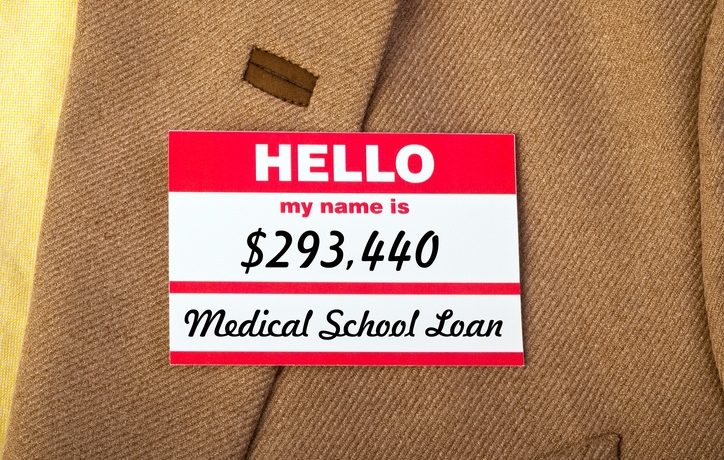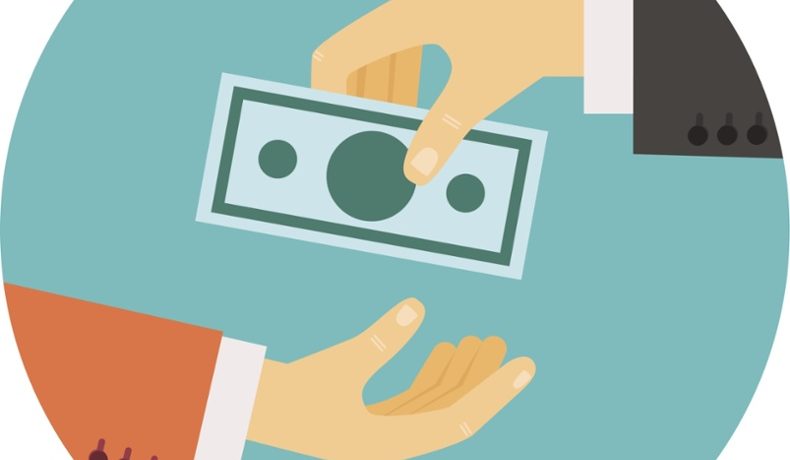loan repayment
5 Ways to Combat Physician Loans

The numbers are staggering.
More than 80 percent of all medical school students graduate with debt, according to the Association of American Medical Colleges. And, it’s not an insignificant amount; the median debt for all indebted medical school graduates in 2015 was $183,000.
That’s a tough sum to swallow after spending 12 to 15 years grinding away in school.
To make matters worse, paying back $183,000 in physician loans at 6 percent interest (which is pretty standard) can cost you about $2,000 a month and take more than 10 years–and include more than $60,000 in interest charges.
Those numbers can seriously cramp your lifestyle and keep you from realizing your financial dreams–especially if you don’t make wise financial decisions. The good news is that you can fight back against these staggering numbers and shorten the length of time it takes to pay down the debt.
Here’s a look at five ways to combat physician loans:
1) Start with a Signing Bonus
Many newly minted medical school graduates have often asked for and received signing bonuses. But, now that the country is in the midst of a physician shortage, the likelihood of receiving a signing bonus is better than ever–and the bonus is likely to be bigger than ever.
So ask.
It can be uncomfortable to ask for a signing bonus, but it’s worth it. According to Becker’s Hospital Review, the average signing bonus for physicians hired during the first half of 2015 (the last year for which figures are available) was more than $21,000. At the end of the day, any amount can help doctors address their physician loans.
2) Pay as You Earn
Many medical school students let their physician loans go into forbearance while they are in residency. Doing this allows the students to postpone making loan payments, but it does not stop interest from accruing.
However, there are programs that allow you to postpone interest capitalization while actually giving you an interest subsidy during the first three years you are making payments on your physician loans.
The income-based repayment program and the Pay As You Earn program both limit your payments to between zero and 10 percent of your overall income.
3) Refinance
It sounds so simple, because it is so simple. It can also save you an incredible amount of money. It’s refinancing, and it’s something you should constantly consider while you are paying back your physician loans.
Of course, refinancing only makes sense if you can lower your interest rate. So the first thing you should do when you graduate from medical school is figure out if refinancing your loan at a lower interest rate makes sense.
4) Find an Under-Served Area
Many states offer loan forgiveness and repayment programs for physicians willing to work in areas that are under-served by health care.
New Hampshire, for example, offers $75,000 toward physician loans to full-time primary care physicians who work in an area of the state that is experiencing a physician shortage for three years.
These programs are great ways for doctors to combat their physicians loans and gain valuable experience.
5) Live Within Your Means
After at least 12 years of education, many new physicians are in a hurry to realize the fruits of their labor. So instead of focusing on reducing their physician loans as quickly as possible, they buy expensive homes, cars and toys–and find themselves in even more debt.
Simply living within your means (and living in an area where the cost of living is low) is actually one of the easiest ways for you to combat your student loan debt.
—
Would you like to read more articles like this one? Subscribe!
![]()
New Hampshire APRN Loan Repayment Strategies

Let’s face it. It’s hard work reaching the status of APRN; and paying off the debt you’ve racked up in order to reach that status can amount to even more of a challenge than the toughest clinicals in your academic career.
But, this isn’t a hopeless challenge. In fact, there programs in place that can help with your APRN loan repayment strategies. One such program is the New Hampshire State Loan Repayment Program (SLRP). Certain areas of New Hampshire are in dire need of medical professionals of all types, including APRNs, so they are more than happy to help you with paying off your loan—if you can meet the requirements.
What Is The New Hampshire SLRP?
Basically, there is a shortage of health professionals throughout the state of New Hampshire. The Division of Public Health Services (DPHS) and Rural Health & Primary Care Section (RHPC) instituted the New Hampshire SLRP in order to remedy this shortage by providing loan repayment to medical professionals working in areas affected by this shortage.
These underserved areas include:
- Medically Underserved Areas/Populations (MUA/Ps)
- Health Care Professional Shortage Areas (HPSAs)
- Governor’s Exceptional Medically Underserved Populations (E-MUP)
- Dental Health Professional Shortage Areas (DHPSAs)
- Mental Health Professional Shortage Areas (MHPSAs)
- Facilities/organizations funded by HHS programs
What Are The Requirements For Your Practice?
Practices participating in SLRP:
- Agree to provide care to all patients, regardless of ability to pay
- Agree to have a sliding-fee schedule in place based on federal poverty guidelines
- Must accept both Medicaid and Medicare
- Must provide free care if medically necessary
What Are Your Service Requirements?
If you choose to participate in SLRP, you’d better plan on staying awhile. In order to be eligible for APRN Student Loan Repayment, there is a minimum service requirement of thirty-six months—if you opt for full time service. If you choose part time service, the requirement is twenty-four months.
How Is Eligibility Determined?
Eligible applicants must:
- Be US Citizens
- Be without any unserved obligations for service to any other agency, whether governmental or non-governmental
- Not be involved in any other loan repayment program
- Be licensed in the State of New Hampshire
- Be able to begin full- or part-time clinical service once a contract has been signed
Which Professionals Qualify For New Hampshire SLRP?
There are three tiers of medical professionals who can receive SLRP under this program. APRNs fall under tier 2. Eligible APRN positions include:
- Nurse Practitioners (NPs)
- Certified Nurse Midwives (NMs)
- Primary Care Physician Assistants (PAs)
- Psychiatric Nurse Specialists (PNSs)
RNs and LPNs are not eligible for funding.
How Much Can You Expect Your APRN Student Loan Repayment To Be?
The amount of your APRN student loan repayment depends on whether you choose to serve full time or part time. Full time APRN participants should expect to get paid back $45,000—but if they choose to work beyond the minimum service obligation (36 months) there is an opportunity for an extension. They may receive an additional $20,000 in exchange for 24 additional months of service.
Part time APRN participants can expect $17,500 if they do the minimum service obligation of 24 months, with an opportunity for a 12-month extension, which will result in an additional $5,000.
What Is The Funding Match?
If either an eligible practice site or, optionally, the community in which you plan to practice can provide you with a one-to-one funding match for each state dollar in your SLRP contract, your application will be considered first.
What Are The Yearly Application Deadlines?
- March 15 (July 1 start)
- June 15 (October 1 start)
- September 15 (January 1 start)
- December 15 (April 1 start)
For a complete description of the program and for more information visit: http://www.dhhs.nh.gov/dphs/bchs/rhpc/repayment.htm
***Disclaimer: This article is for publication purposes only. EHS is not responsible for the accuracy of the program details and eligibility are at the state of New Hampshire’s discretion. Readers are encouraged to visit the website above for more information and to see if you are eligible.
—
Ready to start your APRN career? Why not take a peek at what Elliot Health System has to offer?
![]()





Recent Comments